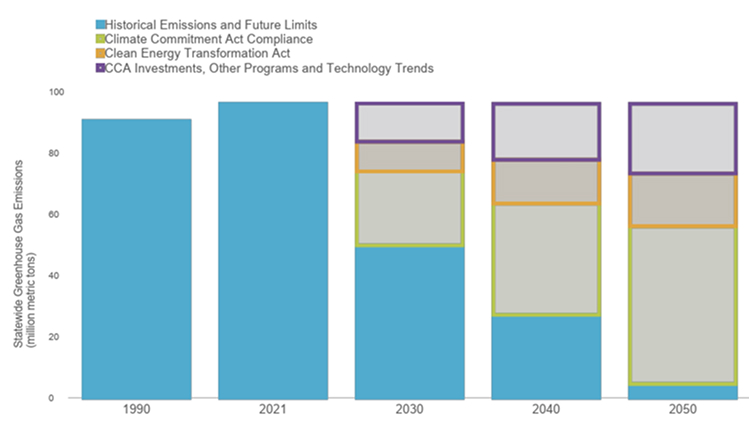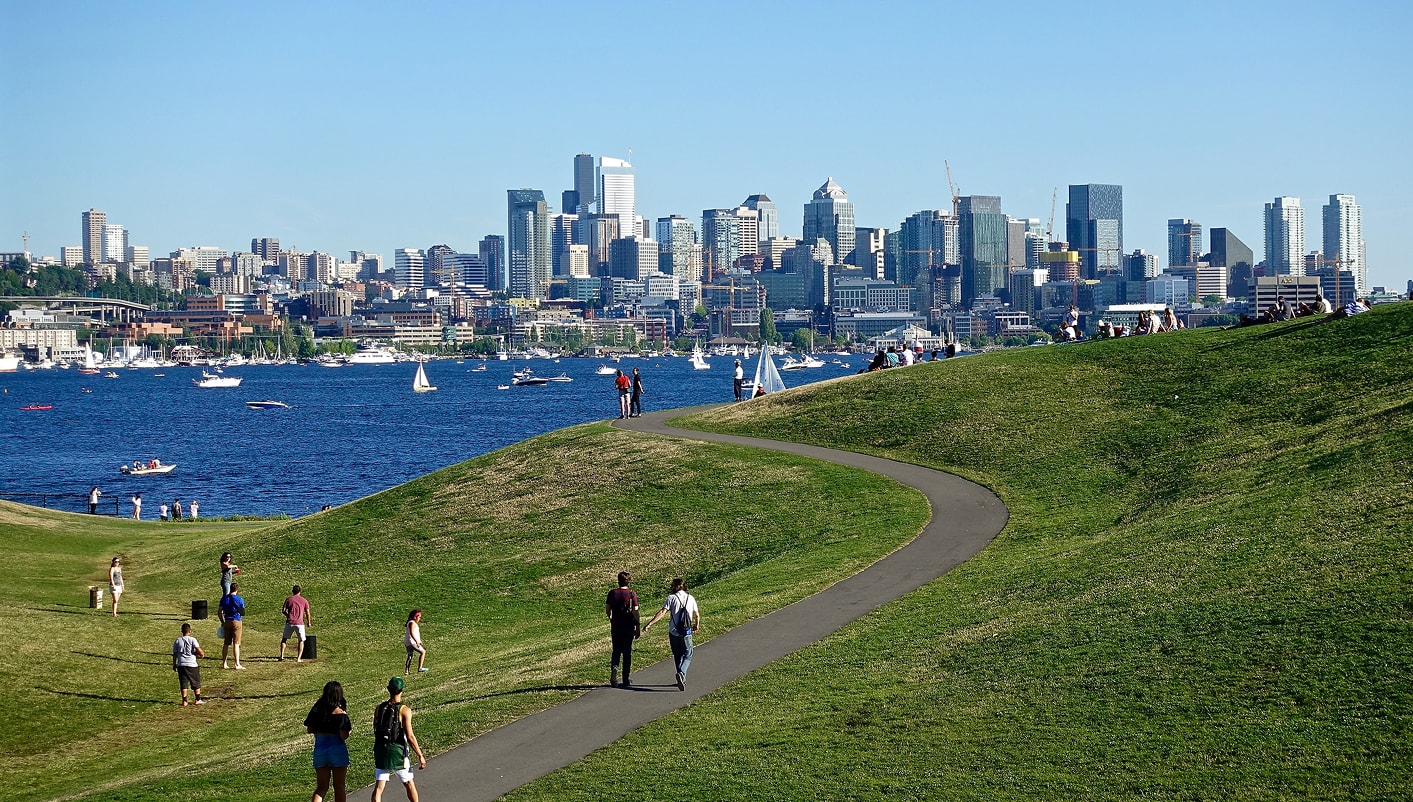Washington’s Climate Commitment Act established one of the most ambitious carbon pricing systems in the world. This cap-and-invest program sets a legally binding, steadily declining limit on greenhouse gas emissions while generating billions in revenue to fund climate and clean energy solutions and community resilience.
Clean & Prosperous works to ensure the success of this landmark policy by tracking carbon market development, supporting implementation, and guiding reinvestment strategies that prioritize meaningful impact, innovation, and measurable progress.
How Cap-and-Invest Works
Cap: A Science-Based Emissions Limit Relative to the 2021 statewide inventory of greenhouse gas (GHG) emissions of 96.1 million metric tons, the CCA GHG emissions baseline is just over 70% of the total (68.05 million metric tons). The conclusion of the first year or program compliance in 2023 saw GHG emissions at 65.1 million metric tons, which represents a 4.4 percent decrease in emissions in the first year of enforcement alone.
Washington sets an enforceable, economy-wide cap on carbon pollution covering over 70% of statewide emissions. This cap declines year over year, aligned with the state’s pollution reduction goals:
- 45% below 1990 levels by 2030
- 70% below by 2040
- Net-zero by 2050
The cap applies to emission sources like fuel suppliers, utilities, and large industrial facilities who must purchase allowances for each ton of pollution they emit.

Invest: Revenue with Purpose
When covered entities buy allowances under the cap through quarterly state-run auctions, that generates revenue. These funds are then reinvested in ways that:
- Reduce emissions across sectors
- Improve air quality and health outcomes
- Strengthen climate resilience in overburdened communities
- Support Tribal nations and natural climate solutions
- Fund zero-carbon transportation, clean energy, and innovation
The law ensures that at least 35% of funds benefit vulnerable communities and at least 10% support projects backed by Tribal nations. Our analysis shows that the state is tracking above these goals, with half or more of all investments supporting overburdened and/or Tribal communities.
Enforce: Mandatory but Flexible Compliance
Covered emitters must submit one allowance or offset for every ton of carbon they emit. While the cap is binding and decreases over time, covered emitters have options for compliance that help the market work efficiently to establish cumulative pollution reduction for the lowest cost.
Often simplified to “trade,” there are several compliance elements that allow flexibility across increasingly stringent compliance windows to meet collective emissions reduction requirements. Importantly, offsets in Washington don’t expand the cap, but work within it. If entities don’t comply, the state can leverage strict penalties on specific emitters and employ certain design guardrails to maintain the integrity of the cap.
See the Climate Commitment Act in Action
Billions of dollars in allowance auction revenue are already being reinvested in communities across Washington—from electric school buses and clean energy projects to tribal village relocation efforts and air quality monitoring.
Our interactive map tracks investments made possible by the Climate Commitment Act. See what climate commitments are taking shape in your city, your county, and across the state.

